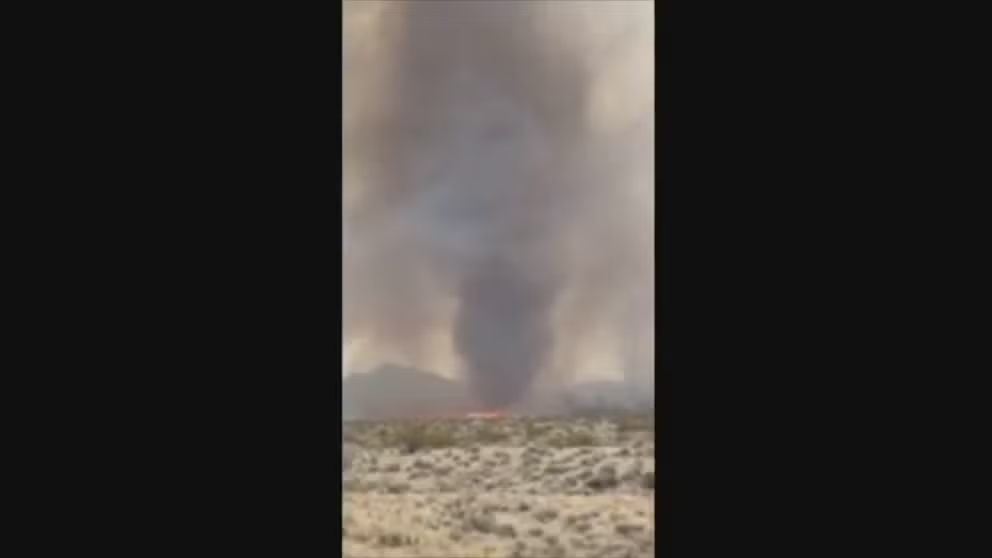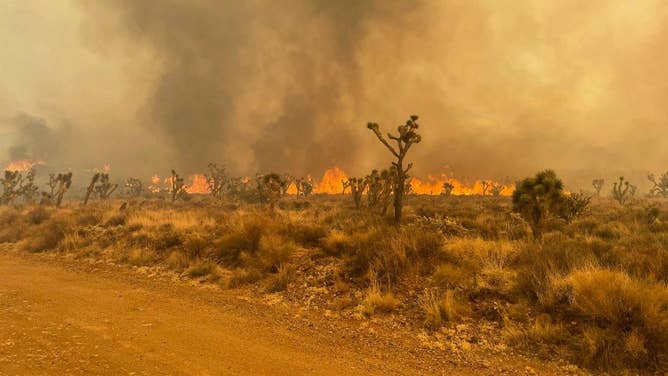As California's York Fire advances, wildlife moves to safety inside Mojave National Preserve
Most desert wildlife, like the desert tortoise, is able to flee the advancing flames of a wildfire, according to Mojave National Preserve officials
Watch: Fire whirls sweep across Mojave National Preserve as York Fire scorches landscape
Cameras captured video of a massive fire whirl that was sweeping across the landscape inside California's Mojave National Preserve as the York Fire scorched the landscape.
MOJAVE NATIONAL PRESERVE, Calif. - The York Fire burning inside California's Mojave National Preserve (MNP) is continuing to spread, and as it does so, wildlife living in the area is doing its best to get out of the way of the advancing flames, even if it's a slow and steady evacuation.
As of Thursday, the York Fire has burned more than 94,000 acres of land and is 63% contained. The containment has been steadily increased over the past few days, thanks partly to monsoon rains that have slowed the fire's advance. Containment lines have also been built and reinforced by hundreds of firefighters that have descended upon the area. Progress stalled Thursday and monsoonal moisture is retreating.
The brave work that firefighters are doing isn't easy, however. Concerns of winds pushing the fire in different directions and the formation of large "fire swirls" have only increased the danger to those working to extinguish the flames.
Wildlife moving to safety as York Fire advances
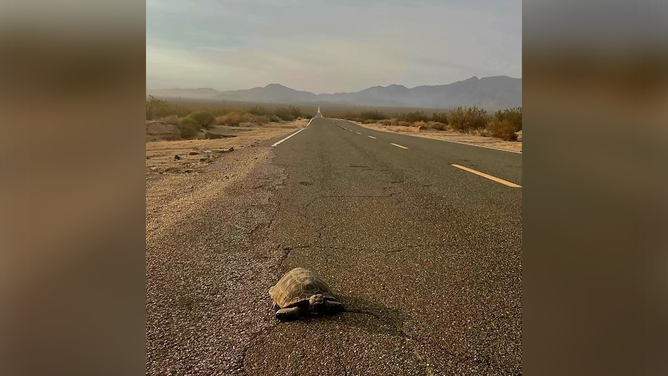
A desert tortoise is seen crossing a road inside the Mojave National Preserve.
(Mojave National Preserve)
MNP officials said the monsoon rain is posing a challenge to firefighters not only because it can affect the York Fire, but it’s also bringing out more wildlife.
The desert tortoise, a federally threatened species, is active on wet summer days. They emerge from their burrows to drink water from pools on the ground or in depressions in rocks, according to the MNP.
And now, because more tortoises are out looking for water to quench their thirst, firefighters are not only having to keep an eye on the growing York Fire but also avoiding burrows and tortoises.
HOW THE LAY OF THE LAND AFFECTS WILDFIRE BEHAVIOR
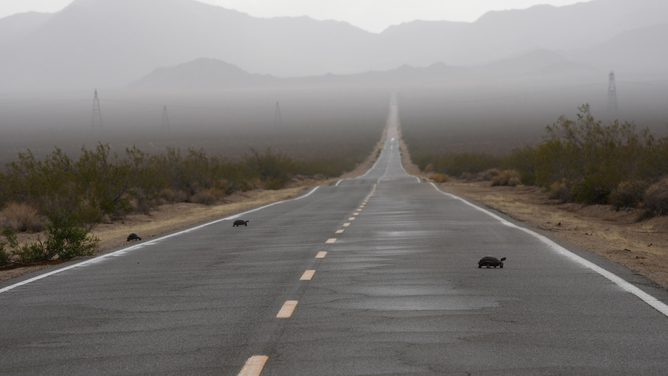
The desert tortoise will emerge from their burrows to search for water after monsoon rain.
(Mojave National Preserve)
Some good news, though, is that MNP staff believes that the York Fire has only caused minimal damage to critical tortoise habitats and has likely only affected a few tortoises since observations of the reptiles in the area are rare.
Also, the MNP says most desert wildlife, including tortoises, can move to safety when a fire approaches the area.
People in the area are now being asked not only keep an eye on the York Fire's progress but to be on the lookout for wildlife that may be crossing roads in the area to get out of harm's way.
HOW AI IS BEING USED TO FIGHT WILDFIRES IN CALIFORNIA
‘Fire whirls’ add to dangers
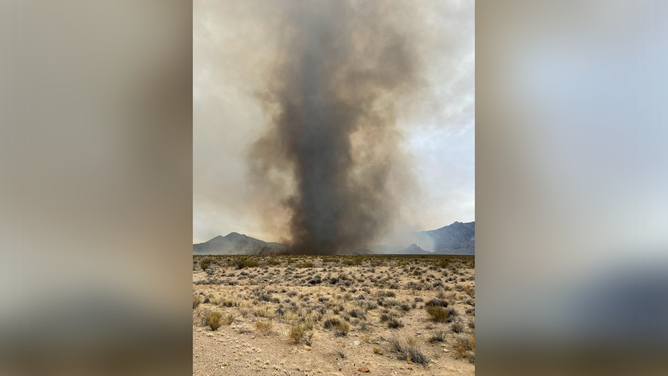
A fire whirl is seen spinning across the desert as the York Fire continues to burn along the California/Nevada border on July 30, 2023.
(Mojave National Preserve/National Park Service/Facebook)
As firefighters try and put an end to the York Fire, they're being met with another danger - fire whirls.
A fire whirl is a vortex of smoke and flames that form when intense heat and turbulent winds combine, creating a spinning column of fire that resembles a tornado.
"These fire whirls are similar to dust devils but are specifically associated with the heat and energy released by a wildfire," the MNP said on Monday. "They can range in size from a few feet to hundreds of feet in height, and their rotational speed can vary widely."
The situation is hazardous for firefighters because the fire whirls can spread embers across all directions, igniting new fires.
